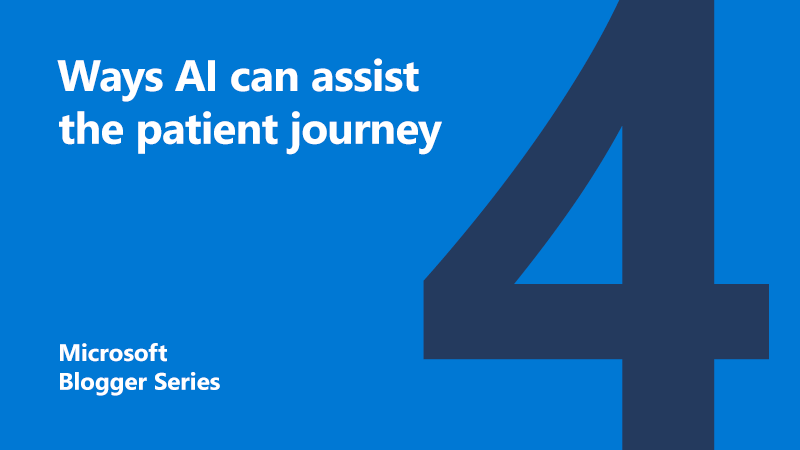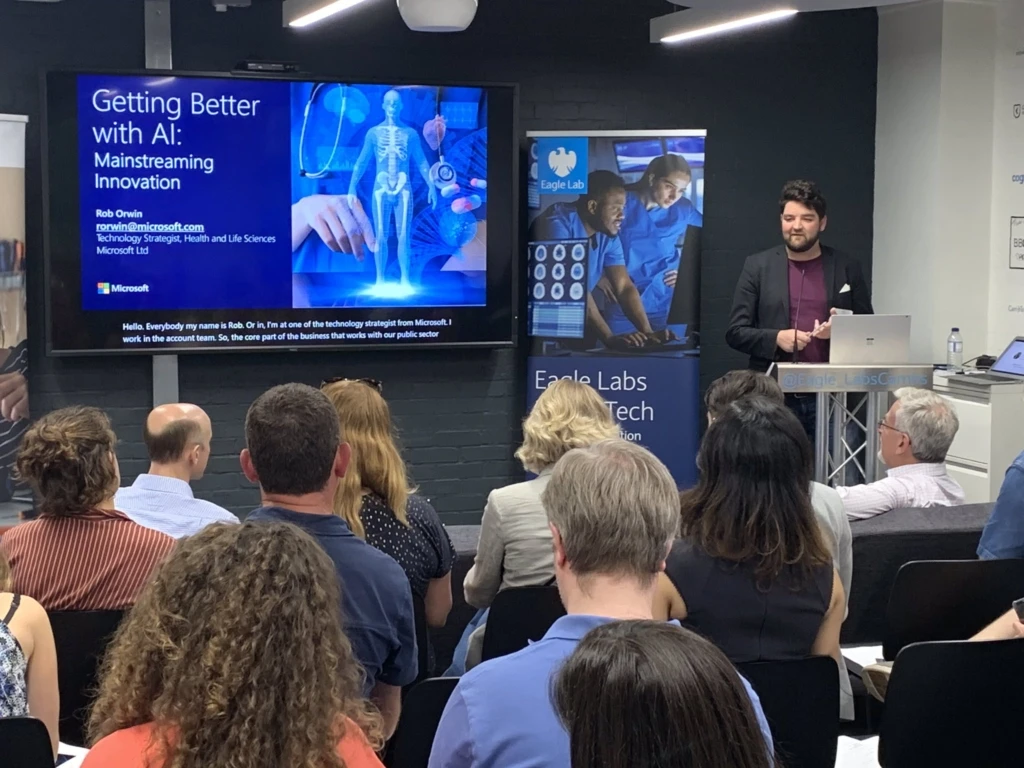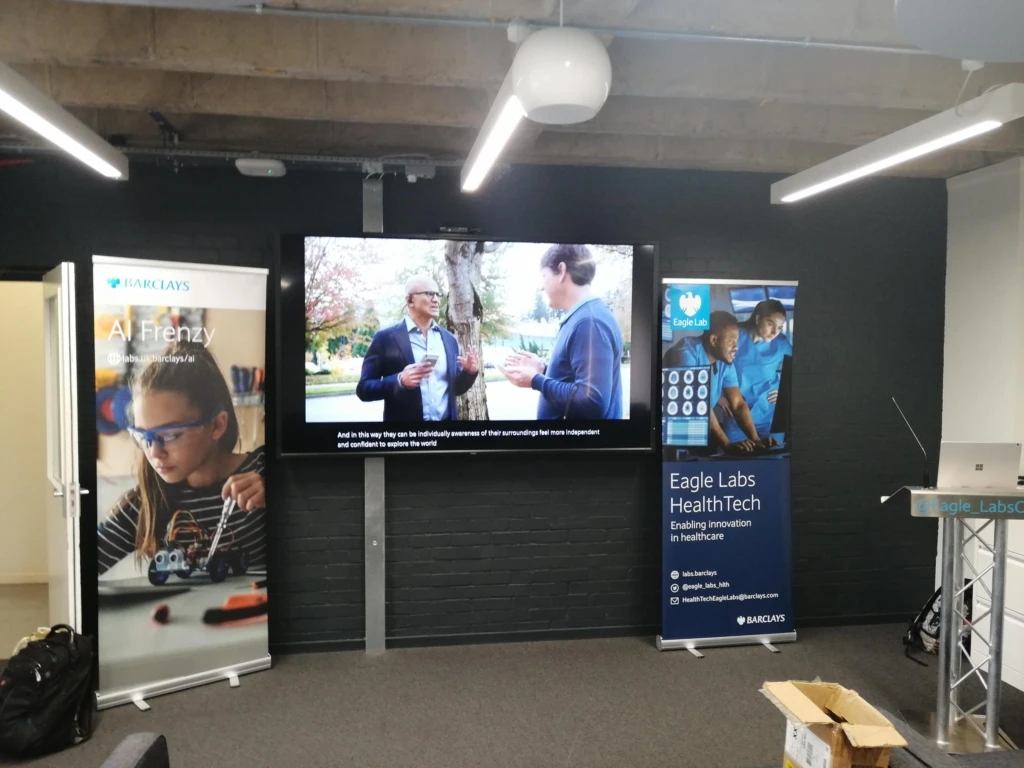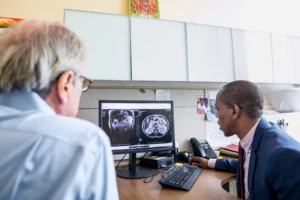
4 ways AI can assist the patient journey
A few months ago, I had the privilege of being invited to present at a Barclays Health AI Frenzy event, in Cambridge.
The Barclays Cambridge Incubator is set up as their home of innovation, to actively support a thriving entrepreneurial and innovation ecosystem specialising in AI.
The audience was a mix of academics, industry specialists and entrepreneurs all involved in the health industry.
When I took a look at the agenda, I realised most of my fellow presenters were going to speak about the kind of AI that relates to big data and predictive algorithms. Rather than follow suit, I decided to present something slightly different.

1. Using AI for accessibility

I focus on the kind of AI which, on the face of it seems almost transparent. It assists humans to do their jobs, helping them work smarter, and it just kind of works behind the scenes. The kind of AI which assists and improves the patient journey.
This type of AI is currently available commercially to anyone. To showcase this, I embedded AI in my presentation to make it more accessible and hopefully, interesting.
As I took to the stage and began speaking, the AI Subtitles service which is built into PowerPoint began capturing my speech and created real-time captions. A powerful feature to make any presentation accessible to people who are hard of hearing.
Using AI for accessibility is easy in Office 365, because it’s built accessible by-design. It helps boost productivity and inclusion for everyone. You can autogenerate subtitles for you PowerPoints like I did, or work to get more accessible documents using the Accessibility Checker.
2. Improve efficiency with AI
AI can even help doctors take notes. Take a patient at their GP appointment, for example. Traditionally a GP takes notes on paper and later enters them into the clinical system, doubling their time. Or they enter the information on a computer while speaking to the patient, which can sometime make the patient feel rushed and disconnected to the GP as their focus seems elsewhere.
Enter Empower MD. An AI powered ambient listening service, it converts speech to text and knows who is speaking. Thanks to its in-built medical dictionary, it pulls out relevant information from the conversation to capture the fundamentals and enable the clinician to easily build on the patient’s notes.
3. How AI can help diagnose and treat patients
 Imagine a clinician suspects a patient is suffering from sleep apnoea, but wants to run further tests. In times past, the patient would have to visit a specialist sleep clinic. There, they are hooked up to a bunch of wires and monitoring devices and try to have a ‘normal’ night’s sleep.
Imagine a clinician suspects a patient is suffering from sleep apnoea, but wants to run further tests. In times past, the patient would have to visit a specialist sleep clinic. There, they are hooked up to a bunch of wires and monitoring devices and try to have a ‘normal’ night’s sleep.
Thanks to a fantastic Microsoft partner, Acurable, the patient can now do this from the comfort of their own home. Patients are sent home with a tiny IoT device, which they place on their chest before going to bed. The device contains simple sensors, which are transferred to Acurable’s AI powered solution in the cloud. This then interprets the signals and turns them into useful data for the clinician to appraise.
Another patient has received their diagnosis and treatment. To ensure that the patient’s health and wellbeing is monitored, they use AI powered Yecco devices. These devices provide their clinicians with up-to-date data and helps patients stay in touch with their support network. Living a long and happy life, aided, and supported by AI for good.
AI is being increasingly used to help clinicians detect abnormalities or create personalised treatment plans for patients. Because it’s taking over tasks that take up a lot of time, it lets clinicians spend more time with patients.
4. Using AI to help business operations

When a patient is referred for further tests and treatment at the local hospital, the referral process is often quite lengthy and involves a lot of paper forms and letters. Thanks to Thoughtonomy’s AI Virtual Worker, the referral is processed and scheduled in automatically and the patient is quickly contacted to book in their appointment.
By using AI to help create solutions that speed up business operational processes, it helps create a better patient journey. By reducing the amount of work an employee has to spend printing, sending, and organising referral letters, for example, these employees have more time to support the value-driven parts of the business.
Scalable and intelligent solutions
These types of patient journey were the stuff of dreams a few short years ago. But it’s the advances in both the power and scale of cloud technology that means these types of solutions and services are available today.
This makes the patient journey easy and stress free in what is often not an easy time. And it helps manage the workloads of operational staff as well as clinicians. This means healthcare employees can spend more time on helping patients and providing more personalised care.
The power of Microsoft’s Azure platform is that it provides AI services which anyone can use and adapt. This means that incredible, scalable, and intelligent solutions and applications can be built astoundingly quickly. Something that couldn’t be done, even just a few years ago.
Find out more
Download the report: Accelerating competitive advantage with AI

About the author
Rob is a Technology Strategist in Microsoft UK’s Health team. He is passionate about working with Health organisations to understand the challenges they face and the innovations they hope to drive, to ensure they get the most out of the Microsoft technology they invest in to achieve and exceed their goals and aspirations.




